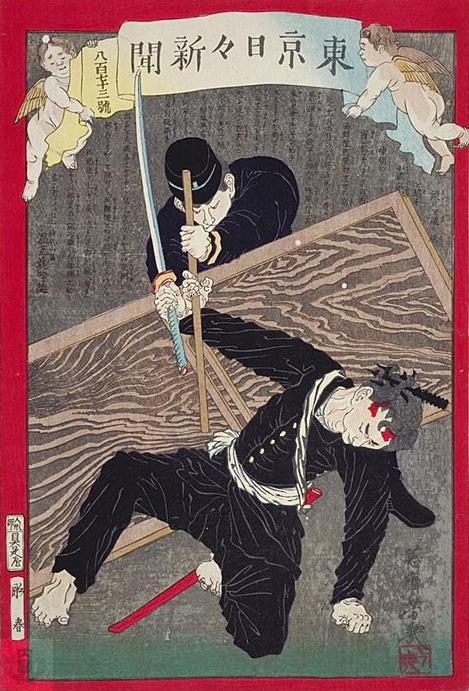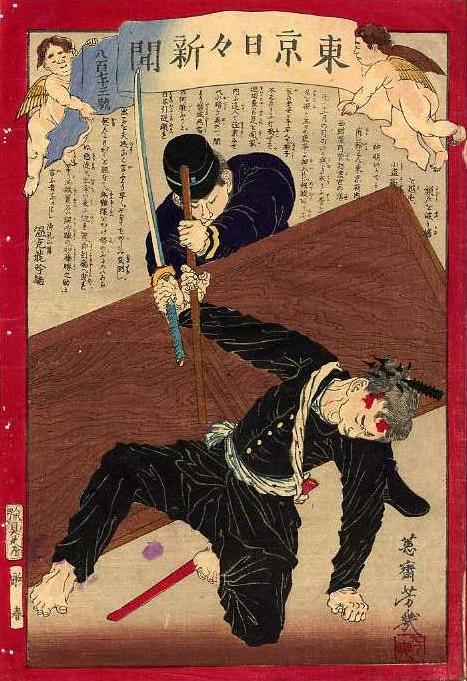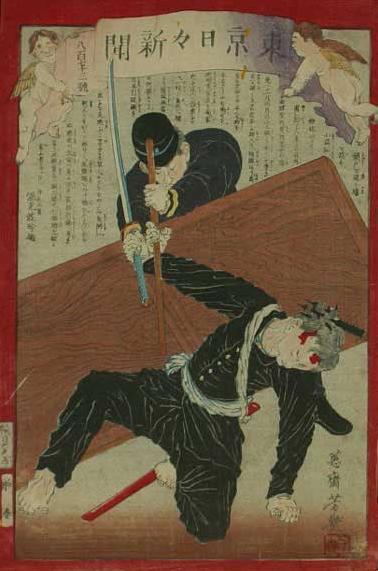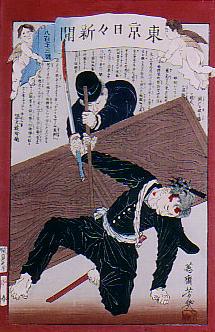Commentary
It takes more than one officer to bring down the thief. The one shown on the print is wielding a straight stick. Another officer, off stage to the right, has caught the thief's hair in a "mojiri" (see below).
Petty Robber Chih reflects 小盗跖 (Shao Tou Seki, Shō Tō Seki), an allusion to Robber Chih (盗跖 Dàozhí), the protagonist of an entire chapter of Zhuāngzĭ (庄子, 荘子 Chuang Tzu), attributed to this 4th century BC Confucian philosopher and his disciples.
Daozhi was a legendary robber in the state of Lu in China during the Spring and Autumn Period (8th-5th centurys BC). The Zhuangzi claims he commanded a gang of nine thousand outlaws and dined on minced human livers (Burton Watson, The Complete Works of Chuang Tzu, New York: Columbia University Press, 1968, Chapter 29, pages 323-338).
the gods reflects 神明, which was probably meant to be read "shinmei". The expression, literally "divine brightness", can also mean the "benevolence" or "virtuousness" that the gods illuminate by their very being.
mojiri reflects モジリ, an iron weapon with barbed tongs mounted on the end of a long stick, used to snag a culprit's garments -- hence also called a "sodegarami" (袖搦み) or "sleeve tangler" -- or hair, as shown in this story.



